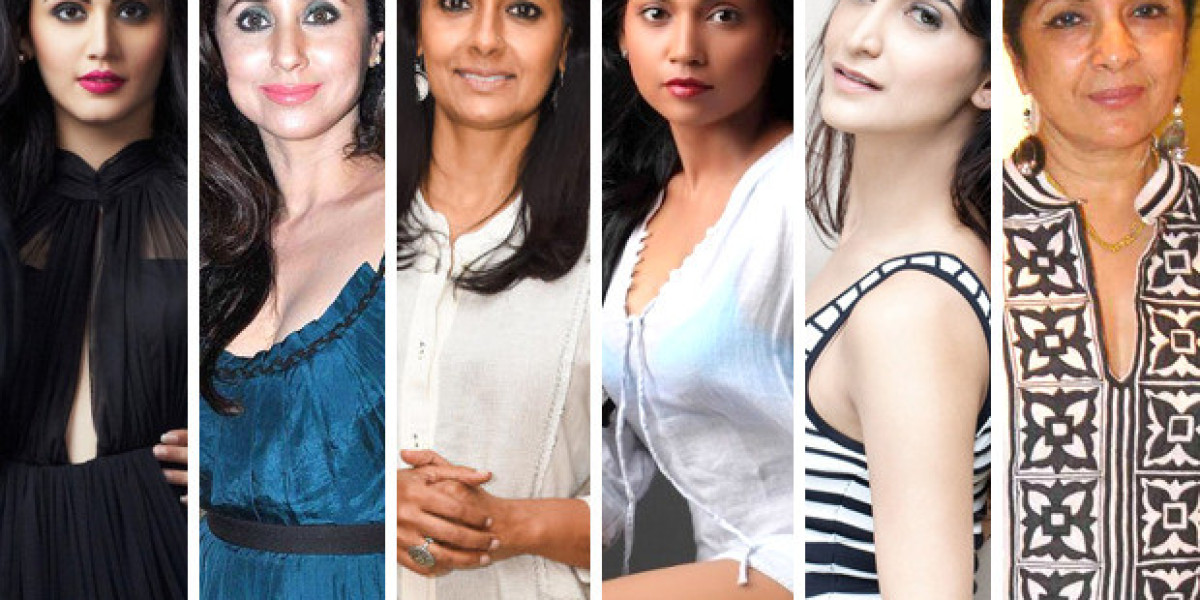Indian cinema, with its vibrant tapestry of languages, cultures, and traditions, has always held a mirror to society, reflecting its myriad hues and complexities. Central to this cinematic universe are the actresses who have graced the screen with their talent, charm, and versatility. From the early days of silent films to the contemporary era of global recognition, Indian actresses have played a pivotal role in shaping the industry and influencing audiences worldwide. This article delves into the journey of Indian actresses, highlighting their contributions, challenges, and the evolution of their roles in cinema.
The Pioneering Era: Silent Films and Early Talkies
The journey of Indian actresses began in the early 20th century with the advent of silent films. During this era, acting was primarily a male-dominated profession, and female roles were often played by men. However, actresses like Durgabai Kamat and Fatma Begum broke societal norms to become the first women to appear on the Indian screen. Durgabai Kamat's appearance in "Mohini Bhasmasur" (1913) marked a significant milestone, as she was the first female actress in Indian cinema.
With the introduction of sound in films, actresses like Devika Rani, known as the "First Lady of Indian Cinema," emerged as major stars. Her role in "Karma" (1933) showcased her talent and helped establish the viability of female-centric narratives. Devika Rani's on-screen presence and off-screen contributions as a producer set the stage for future generations of actresses.
The Golden Age: 1940s to 1960s
The period from the 1940s to the 1960s is often referred to as the Golden Age of Indian cinema. This era witnessed the emergence of legendary actresses who left an indelible mark on the industry. Nargis, Madhubala, and Meena Kumari were among the iconic figures who not only mesmerized audiences with their performances but also brought depth and nuance to their characters.
Nargis's role in "Mother India" (1957) is one of the most celebrated performances in Indian cinema. Her portrayal of a resilient mother struggling against all odds earned her international acclaim and symbolized the strength of Indian womanhood. Madhubala, often compared to Hollywood's Marilyn Monroe, enchanted viewers with her beauty and acting prowess in films like "Mughal-e-Azam" (1960). Meena Kumari, known as the "Tragedy Queen," captivated audiences with her emotive performances in films such as "Pakeezah" (1972).
These actresses not only entertained but also challenged the traditional portrayal of women in cinema, paving the way for more complex and diverse female characters.
The Transformative Years: 1970s to 1990s
The 1970s to the 1990s marked a transformative period in Indian cinema, characterized by significant social and political changes. Actresses during this time began to explore a wider range of roles, reflecting the evolving aspirations and struggles of Indian women.
Hema Malini, often referred to as the "Dream Girl," dominated the silver screen with her versatility and charm. Her performances in films like "Sholay" (1975) and "Seeta Aur Geeta" (1972) showcased her ability to excel in both dramatic and comedic roles. Sridevi, one of the most celebrated actresses of this era, brought a new dimension to female stardom with her captivating performances in films such as "Chandni" (1989) and "Lamhe" (1991). Sridevi's ability to blend glamour with substance made her a trailblazer in Indian cinema.
Madhuri Dixit, with her impeccable dancing skills and acting talent, became the reigning queen of Bollywood in the late 1980s and 1990s. Her role in "Dil To Pagal Hai" (1997) earned her critical acclaim and solidified her status as a leading actress. These actresses not only broke box office records but also became style icons and role models for millions of fans.
The Contemporary Era: 2000s to Present
The 21st century has witnessed a significant shift in the roles and recognition of Indian actresses. The contemporary era is characterized by a more globalized and diverse cinema landscape, with actresses gaining international acclaim and exploring a variety of genres and formats.
Aishwarya Rai Bachchan, crowned Miss World in 1994, transitioned from beauty queen to one of India's most successful actresses. Her performances in films like "Devdas" (2002) and "Jodhaa Akbar" (2008) received widespread acclaim. Priyanka Chopra, another global icon, has made a successful crossover to Hollywood with her role in the TV series "Quantico" and films like "Baywatch" (2017). Chopra's journey from Bollywood to Hollywood exemplifies the increasing global footprint of Indian actresses.
Deepika Padukone, with her compelling performances in films like "Padmaavat" (2018) and "Chhapaak" (2020), has emerged as one of the most influential actresses of her generation. Her advocacy for mental health awareness and gender equality has further cemented her status as a socially conscious star.
The contemporary era has also seen a rise in female-led narratives and strong, independent female characters. Actresses like Vidya Balan, Kangana Ranaut, and Taapsee Pannu have chosen roles that challenge stereotypes and address important social issues. Vidya Balan's portrayal in "Kahaani" (2012) and Kangana Ranaut's performances in "Queen" (2013) and "Manikarnika" (2019) have garnered critical and commercial success.
Challenges and Triumphs
Despite their achievements, Indian actresses have faced numerous challenges, including gender bias, pay disparity, and societal expectations. The #MeToo movement in India highlighted the pervasive issue of sexual harassment in the industry, leading to greater awareness and calls for change.
However, these challenges have also spurred a new wave of activism and advocacy among actresses. Many have used their platforms to speak out against injustice, promote gender equality, and support various social causes. This activism reflects a broader shift towards a more inclusive and equitable industry.
Conclusion
The journey of Indian actresses is a testament to their resilience, talent, and ability to adapt to changing times. From the pioneering days of silent films to the contemporary era of global recognition, Indian actresses have continually pushed boundaries and redefined the portrayal of women in cinema. Their contributions have not only enriched Indian cinema but also inspired countless individuals worldwide.
As Indian cinema continues to evolve, the future looks promising for actresses who dare to dream, challenge norms, and tell compelling stories. With their unwavering determination and boundless talent, Indian actresses will undoubtedly continue to shine brightly on the global stage, leaving an indelible mark on the world of cinema.
Source https://mp4moviez.monster















